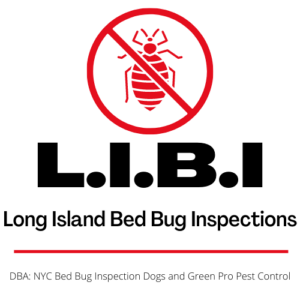Over the past year or more traveling has been a luxury that few of us could enjoy. Circumstances being what they were, cross-country travel came to a virtual stand still. International travel was even more restricted and for a time we were all limited in where, and how far, we could travel.
One of the unintended consequences of the Coronavirus lockdowns and travel restrictions was a marked drop in bed bug activity. Fewer travelers meant fewer opportunities for bed bugs to spread to new environments. But with travel restrictions easing we can expect a return to normal bed bug activity. That makes this a good time to review some tips for protecting yourself from bed bugs while on the road.
Lodging Tips
Before booking a hotel or motel room set aside some time to do a bit of online research. Review sites like Yelp and the Bed Bug Registry are a good source of information when looking for lodgings that are bed bug free. While the reviews on these sites may not always be current, they do provide some first hand reporting that will help you make an informed decision before you book a room.
Keep in mind that cost is not always a factor when avoiding bed bug infested lodgings. Luxury 5-star hotels are just as susceptible to bed bug infestation as anywhere else. So before you finalize any bookings be sure to enquire about any past bed bug infestations and how hotel management handled the situation. Also be sure to ask if the hotel schedules regular bed bug inspections. Hotels and motels that take pest control seriously are usually better bets than those with a more casual attitude.
Baggage Advice
It’s also a good idea to take a moment to think about the luggage you will be taking on your trip. Soft-sided luggage is a popular choice with travelers. It’s lightweight and easy to carry through airports and in taxis and shuttles. Unfortunately, soft-sided luggage is pretty much the preferred baggage choice of all bed bugs. They grab onto the loose fabric, hitch a ride with you to your final destination, and then hop off and become homesteading.
Hard shell luggage is almost always the better option. It may be heavier and slightly more unwieldy, but it’s easier to clean and harder for bed bugs to grab hold of. Also, whatever luggage you choose, it’s a good idea to use zip lock bags to help protect your belongings. Bagging clothes, toiletries, and other items will add further protection from adventuresome bed bugs.
Top Tips for Your Journey
Whether you’re traveling by bus, train or airplane you need to think about your personal space. When you take your seat take some time to inspect the area for any telltale signs of bed bug activity. These bloodsuckers may be small but they aren’t invisible. You should be able to spot them with the naked eye if you take some time and look carefully. This same tip applies to the seating in bus and train terminals as well as airport lounges.
Of course, once you’ve checked your baggage you won’t have much control over your luggage. That’s just the way things are. However, when it comes time to retrieve your baggage take some extra time to inspect your belongings for any signs that bed bugs have decided to hitch a lift on your bags. Before you load your bags into a cab or a shuttle, or especially a friend’s car, give them the once over.
Tips for Checking in and Unpacking
Once you reach your stop give your room a quick inspection. Place your luggage in the bathroom while you inspect the rest of your lodgings. The tiled floor will help to protect your belongings while you look the room over. Remember, bed bugs like to hide in remote areas so take your time. Check out the bed (including the mattress and headboard), the bed linen, the carpet, and any upholstered furniture.
Keep your eyes peeled for any of the following signs of bed bug activity:
- Small rust colored spots on mattress or bed linen
- Clusters of black spots on mattresses, linen, or upholstery
- Bed bug exoskeletons
If you see any signs of a bed bug infestation don’t hesitate to bring it to the attention of the front desk. Ask for another room and insist that it is at least two floors away from the room you’re refusing. If you decide you need to change rooms be sure to inspect the new room as well before you finally unpack.
For added protection during your stay keep your luggage on a luggage rack or continue to keep it in the bathroom. In extreme situations it may be wise to keep your luggage in resealable plastic bags of additional safety.
Coming Back Home
Once you return home from your trip there are a few final tips to follow. If you take these extra steps you can further minimize your risk for picking up any bed bugs on your travels.
- Unpack and inspect your bags outside before bring your belongings into your home
- Immediately wash and dry all of your clothing
- Dry clean any items that may need special attention
- Clean and vacuum out your bags
As travel begins to return to normal it’s important to take steps to protect yourself from a potential bed bug infestation. These simple tips will help to minimize your risk and ensure that you don’t bring home any unwanted guests.
Published by Scott Palatnik
If you believe you’ve brought bed bugs into your home or office, give us a call, we can help!
Now with 2 locations. On Long Island @ 516-619-6149, or in NYC @ 212-299-9186
We are Long Island Bedbug Inspections.
Your Bedbug Inspection, and Elimination solution.


